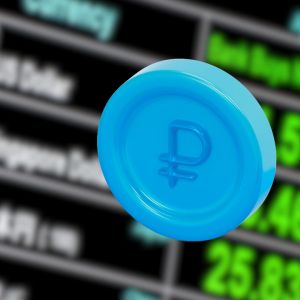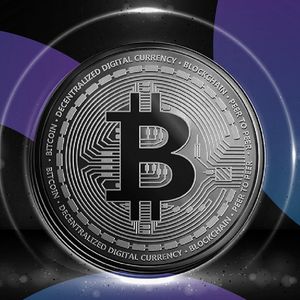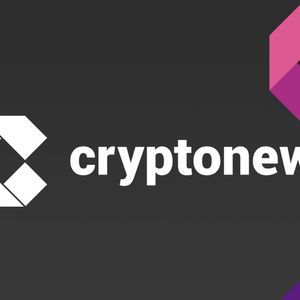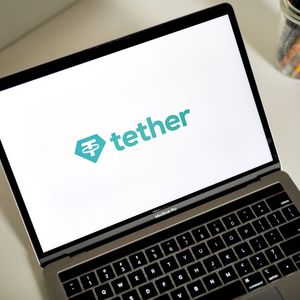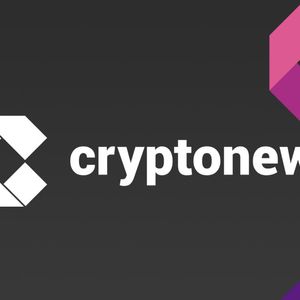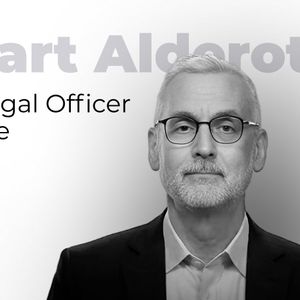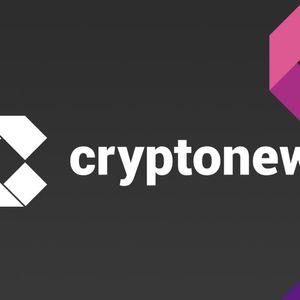The FDIC board will review a proposed rule limiting regulators’ use of reputation risk to justify supervisory actions, a move that could curb alleged crypto debanking and change how banks handle client activity tied to digital assets. FDIC to weigh a rule restricting regulator reliance on “reputation risk” Acting Chair Travis Hill supports reevaluating supervisory approaches for crypto-related banking activities. Court records and presidential executive guidance have intensified scrutiny of alleged debanking actions tied to digital assets. FDIC reputation risk rule could curb crypto debanking and restore banking access for digital-asset firms — read the implications and next steps. An FDIC meeting will follow up on acting chair Travis Hill’s statements that he would support Trump’s executive order targeting “politicized or unlawful debanking activities.” What is the FDIC reputation risk rule under consideration? FDIC reputation risk rule refers to a proposed notice of rulemaking to limit regulators’ use of “reputation risk” as a basis for supervisory action. The rule would narrow when examiners can cite reputation concerns to restrict bank services, potentially affecting crypto-related banking relationships. How could the proposed rule affect crypto debanking? Limiting regulator reliance on reputation risk could reduce instances where banks pause or terminate services to crypto firms without clear statutory or regulatory violations. Acting FDIC chair Travis Hill has said the agency will reevaluate supervisory approaches to crypto-related activities to prevent politicized or unlawful debanking. The FDIC’s October notice asks its board to consider a formal notice of proposed rulemaking “regarding prohibition on use of reputation risk by regulators.” While the agenda item did not specifically mention digital assets, industry leaders view the move as directly relevant to ongoing crypto banking access concerns. In public statements and agency memos, the term “reputation risk” has been cited by regulators during supervisory engagements. Court records made public in December via a Freedom of Information Act request show the FDIC asked some institutions to “pause all crypto asset-related activity” in 2022, illustrating how reputation risk language was operationalized in certain reviews. Why is this rulemaking politically and operationally significant? President Donald Trump’s August executive order on “guaranteeing free banking” framed reputation risk as a tool that can lead to “politicized or unlawful debanking.” The executive order did not name digital assets but elevated concerns from the crypto sector that access to U.S. banking was restricted because of industry ties to crypto. Allegations of coordinated pressure on banks—sometimes labeled “Operation Chokepoint 2.0” by critics—became a campaign issue during the 2024 election. After the administration change, the FDIC signaled a review of past supervisory approaches, and acting chair Travis Hill has advocated clearer limits on reputation-based supervisory actions. When will the FDIC board decide and what are next steps? The board is scheduled to discuss the notice of proposed rulemaking at its upcoming meeting. If the board approves publication, the agency would publish the notice, open a public comment period, and then consider adopting a final rule—typically a process that can take months depending on comment volume and interagency coordination. Frequently Asked Questions Will the FDIC rule immediately restore banking access for crypto firms? No. A proposed rule must go through notice-and-comment. Even if finalized, banks retain their own compliance and risk-management obligations; changes to supervisory guidance reduce one regulatory justification for service restrictions but do not automatically compel banks to onboard specific clients. Did regulators explicitly instruct banks to stop crypto activity in the past? Publicly available court records and agency documents indicate that regulators sought pauses or heightened scrutiny on crypto-related activities in 2022. These actions contributed to industry claims of restricted banking access, though regulators have cited safety, soundness, and compliance concerns as their rationale. How does the ongoing US government shutdown affect the FDIC rulemaking? The US government shutdown has limited operations at several financial regulators, but the FDIC stated it will remain “open and operational.” Timelines for formal rulemaking could still be affected by interagency coordination and staffing constraints outside the FDIC. Key Takeaways Proposed rule : FDIC is considering a rule to curb use of “reputation risk” by regulators. Crypto impact : The rule could reduce one supervisory justification for banks to restrict crypto clients, but it does not force banks to onboard clients. Process : If published, the rule will enter a notice-and-comment period before any final adoption; timelines may extend depending on public input and coordination. Conclusion COINOTAG reports that the FDIC’s proposed limitation on regulator use of reputation risk marks a pivotal step in addressing allegations of crypto debanking. While the rule could change supervisory behavior, industry access to banking will depend on final rule language, bank compliance frameworks, and future supervisory guidance. Monitor the FDIC notice-and-comment process for updates. { "@context": "https://schema.org", "@type": "HowTo", "name": "How to track the FDIC reputation risk rulemaking", "description": "Steps to monitor the FDIC notice of proposed rulemaking and public comment period.", "step": [ { "@type": "HowToStep", "position": 1, "name": "Review the FDIC board agenda", "text": "Check the FDIC board agenda for publication of the notice of proposed rulemaking and the scheduled meeting date." }, { "@type": "HowToStep", "position": 2, "name": "Read the published notice", "text": "When published, read the notice of proposed rulemaking carefully to understand the proposed restrictions on use of reputation risk." }, { "@type": "HowToStep", "position": 3, "name": "Submit comments", "text": "Prepare and submit public comments during the notice-and-comment period to register support, concerns, or suggested edits." }, { "@type": "HowToStep", "position": 4, "name": "Monitor final rule publication", "text": "Track whether the FDIC adopts a final rule and review implementation timelines and guidance for banks." } ]} { "@context": "https://schema.org", "@type": "FAQPage", "mainEntity": [ { "@type": "Question", "name": "What is the FDIC reputation risk rule under consideration?", "acceptedAnswer": { "@type": "Answer", "text": "The FDIC is considering a notice of proposed rulemaking to limit regulators' use of 'reputation risk' as a basis for supervisory actions, a change that could reduce one justification for banks to restrict services to crypto firms." } }, { "@type": "Question", "name": "How could this rule affect crypto debanking?", "acceptedAnswer": { "@type": "Answer", "text": "By narrowing when examiners can cite reputation risk, the rule could lessen instances where banks pause or end relationships with crypto clients absent clear compliance violations, though it would not compel banks to onboard specific firms." } }, { "@type": "Question", "name": "Will the FDIC rule immediately restore banking access for crypto firms?", "acceptedAnswer": { "@type": "Answer", "text": "No. Rulemaking requires notice-and-comment and finalized language; banks will still consider compliance, risk, and commercial factors when deciding client relationships." } } ]} { "@context": "https://schema.org", "@type": "NewsArticle", "headline": "FDIC Board to Consider 'Reputation Risk' Rule That Could Affect Crypto Debanking", "image": [], "datePublished": "2025-10-03T08:00:00Z", "dateModified": "2025-10-03T08:00:00Z", "author": { "@type": "Organization", "name": "COINOTAG" }, "publisher": { "@type": "Organization", "name": "COINOTAG" }, "mainEntityOfPage": "https://en.coinotag.com/fdic-reputation-risk-crypto", "description": "An FDIC board meeting will consider a proposed rule limiting regulator use of reputation risk, a development with direct implications for alleged crypto debanking."}
Ethereum Price Prediction: Wall Street Firm Launches Round-the-Clock ETH Trading – New Wave of Institutional FOMO Coming
Wall Street is finally catching up to crypto’s always-on rhythm, as CME Group just announced 24/7 trading access for Ethereum and Bitcoin futures – a move that strongly favors a bullish Ethereum price prediction . Starting early 2026, trade crypto on your schedule. https://t.co/x1FLEwVAnl pic.twitter.com/RmCGMLWh4h — CME Group (@CMEGroup) October 2, 2025 The update follows a major spike in institutional activity, with open interest hitting a record $38 billion and over 1,100 institutions active on a single day. With ETH already one of the most traded crypto assets on CME, this decision could attract fresh inflows from hedge funds and banks – potentially setting the stage for a major price breakout. Ethereum Price Prediction: ETH Offers 120% Upside Potential After Key Support Bounce Ethereum has booked a 14.5% gain in the past 7 days, and it is currently nearing $4,500. The token has had an outstanding run this year, moving out of a 40% loss at some point to a 34.6% gain following the successful implementation of the Pectra upgrade. The Relative Strength Index (RSI) has just broken out from oversold territory, flashing a buy signal as it crosses above its 14-day moving average and clears the mid-line. This suggests Ethereum’s next major move has already begun. After bouncing strongly off the $4,000 support level, ETH now looks set to retest $5,000 in the near term. If it breaks above that resistance, the path to $10,000 opens up quickly – representing a 122% upside from today’s price. With altcoin season now underway, Ethereum is positioned to lead the charge alongside other heavyweights like BNB Coin (BNB) and Solana (SOL). Meanwhile, early-stage crypto presales could outperform even top-tier tokens, and one project catching investor attention is SUBBD ($SUBBD) – a rising contender many are calling this cycle’s next hidden gem. SUBBD ($SUBBD) Presale Powers AI-Driven Content Creation on Web3 SUBBD ($SUBBD) lets creators build and monetize their entire brand in one place – powered by AI and backed by crypto. From AI bots that handle fan engagement to tools that automate content workflows, SUBBD is designed to simplify and supercharge the creator economy. The $SUBBD token unlocks premium perks like discounts, staking rewards, exclusive drops, and early access to features – all while giving holders a say in how the platform evolves. This is more than just a presale – it’s a new way for creators to scale with tech that actually works for them. What makes SUBBD stand out is its timing: AI adoption is exploding, crypto payments are scaling, and content creation is one of the fastest-growing industries worldwide. SUBBD sits at the center of all three. To buy $SUBBD at its presale price, simply head to the SUBBD official website and link up a compatible wallet (e.g. Best Wallet ). You could swap crypto for this token or use a bank card to purchase $SUBBD tokens. The post Ethereum Price Prediction: Wall Street Firm Launches Round-the-Clock ETH Trading – New Wave of Institutional FOMO Coming appeared first on Cryptonews .
Coinbase Files for OCC National Trust Charter, Could Expand into Payments and Related Services if Approved
Coinbase national trust charter: Coinbase has filed for a National Trust Company Charter with the Office of the Comptroller of the Currency (OCC) to expand beyond custody into payments and related services, seeking regulatory clarity to support institutional adoption while saying it does not intend to become a bank. Coinbase filed for an OCC national trust charter to expand services beyond custody. The move follows similar applications by Circle, Paxos, and Ripple and aims to strengthen regulatory certainty. Approval could enable payments and related services, increasing institutional access and product offerings. Coinbase national trust charter: Coinbase filed with the OCC to expand services beyond custody—read how the application could unlock payments, custody upgrades, and institutional adoption. What is Coinbase’s national trust charter application? Coinbase national trust charter is an application filed with the Office of the Comptroller of the Currency (OCC) for a National Trust Company Charter. The filing seeks authority to offer trust, custody, and potentially payments-related services under federal oversight while maintaining the company’s statement that it does not intend to become a bank. How could an OCC national trust charter change Coinbase’s services? If approved, the charter would allow Coinbase to broaden offerings beyond custody into payments and related trust services. The company cited regulatory clarity as a catalyst for product innovation and broader institutional adoption. Comparable filings by Circle, Paxos, and Ripple signal a trend where digital-asset firms pursue federal charters to enable scalable, regulated service platforms. { "@context": "https://schema.org", "@type": "NewsArticle", "headline": "Coinbase Files for National Trust Company Charter With OCC", "description": "Coinbase national trust charter: Coinbase filed with the OCC to expand services beyond custody, seeking regulatory clarity for payments and institutional adoption.", "datePublished": "2025-10-03T12:00:00Z", "dateModified": "2025-10-03T12:00:00Z", "author": { "@type": "Organization", "name": "COINOTAG" }, "publisher": { "@type": "Organization", "name": "COINOTAG", "logo": { "@type": "ImageObject", "url": "https://en.coinotag.com/assets/logo.png" } }, "mainEntityOfPage": { "@type": "WebPage", "@id": "https://en.coinotag.com/articles/coinbase-occ-charter" }} { "@context": "https://schema.org", "@type": "HowTo", "name": "How to understand Coinbase's OCC national trust charter filing", "description": "Steps to evaluate the implications of a National Trust Company Charter application by a crypto firm.", "step": [ { "@type": "HowToStep", "name": "Confirm the filing", "text": "Verify the firm announced an application to the Office of the Comptroller of the Currency for a National Trust Company Charter." }, { "@type": "HowToStep", "name": "Identify scope", "text": "Read the filing and company statement to determine whether it seeks custody, payments, or other trust services." }, { "@type": "HowToStep", "name": "Assess regulatory impact", "text": "Evaluate how federal oversight could change compliance, consumer protections, and institutional participation." }, { "@type": "HowToStep", "name": "Compare peers", "text": "Compare the filing and public statements with similar filings by Circle, Paxos, and Ripple to gauge market trends." } ]} { "@context": "https://schema.org", "@type": "FAQPage", "mainEntity": [ { "@type": "Question", "name": "Why did Coinbase apply for a national trust charter?", "acceptedAnswer": { "@type": "Answer", "text": "Coinbase applied for a national trust charter to gain regulatory clarity that could enable it to offer custody, payments, and related trust services while supporting broader institutional adoption." } }, { "@type": "Question", "name": "Will a national trust charter make Coinbase a bank?", "acceptedAnswer": { "@type": "Answer", "text": "Coinbase has stated it has no intention of becoming a bank; the charter is intended to authorize trust and custody operations under OCC supervision, not traditional banking activities." } } ]} Frequently Asked Questions Why did Coinbase apply for an OCC national trust charter? Coinbase filed for the charter to secure federal oversight and regulatory clarity. The company expects approval to enable new products beyond custody, including payments and related services, which it says will foster broader institutional adoption. Does the application mean Coinbase will become a bank? Coinbase has explicitly stated it does not intend to become a bank. A national trust charter would authorize trust and custody operations under OCC rules, not full-service banking, according to the company’s announcement. How does this compare with other crypto firms? Other firms including Circle, Paxos, and Ripple have pursued similar charters or federal approvals. These moves indicate a sector trend toward seeking federal frameworks to support large-scale custody and payments infrastructure. Key Takeaways Regulatory clarity: The Coinbase national trust charter application aims to provide clearer federal oversight for custody and payments services. Not a bank: Coinbase states it does not intend to convert into a bank; the charter targets trust and custody authorities. Industry trend: Similar filings from Circle, Paxos, and Ripple show growing demand for federal charters among crypto firms. Conclusion The Coinbase national trust charter filing marks a significant step in the company’s strategy to expand beyond custody into payments and related trust services under OCC supervision. If approved, the charter could accelerate institutional adoption and product development while keeping Coinbase’s stated non-bank positioning intact. Follow official OCC updates and Coinbase disclosures for final determinations and timelines.
45 DOGE staffers remain on the White House payroll despite the government shutdown and Elon Musk’s departure
Forty-five employees of Elon Musk’s Department of Government Efficiency (DOGE) remain on the White House payroll despite the Tesla CEO’s exit in May, and they are not being furloughed under the current government shutdown. This fact appears in a memo released on Thursday by the White House Office of Administration, which lays out who stays and who goes while Congress stalls on funding. It shows a clear picture: DOGE staff keep working while many other government workers sit at home without pay. The memo does not say why these 45 DOGE workers are untouched, but their status stands out as other White House offices shrink. The memo also shows how President Donald Trump is handling this shutdown differently from 2018. Trump has furloughed 514 fewer staffers this time than in the last shutdown under his watch. In that earlier plan, which former President Joe Biden had also approved but never had to use, about 61% of the Executive Office of the President was temporarily laid off. This current plan hits only 32% of the staff. The result is that far more staffers remain on the job, but Trump is openly saying he wants to lay off federal workers outright instead of just sending them home temporarily. According to the White House, these cuts could reach the “thousands.” Trump keeps DOGE running during shutdown Among the offices still running at full capacity is DOGE , which Elon once led as a cost-cutting operation before falling out with Trump over the president’s deficit-expanding tax cut bill. Elon’s departure in May came with a White House statement saying DOGE had been “decentralized,” meaning its teams across the government would report to their agency heads instead of a single leader. But the shutdown plan proves otherwise. It shows that 45 DOGE staffers still work in the US DOGE Service, a unit inside the Executive Office of the President. The memo, signed by Joshua Fisher, director of the White House Office of Administration, does not say why DOGE staffers escaped furloughs. But the US Digital Service, which preceded DOGE, had a history of staying open during past shutdowns because it had its own source of funding from fees charged to other agencies. This background raises questions about whether DOGE also benefits from a separate funding stream. For now, though, the memo just notes their exemption without an explanation. Fewer furloughs in other White House offices Other White House divisions also show big changes compared with 2018. The Office of Management and Budget now keeps 437 employees on duty, far more than the 161 retained under the earlier plan. A tax cut law known as the One Big Beautiful Bill gave the budget office $100 million in long-term funding, which may help explain the difference. The White House Office, which covers the president’s immediate staff, keeps 175 aides on the job now, compared with 156 during the last shutdown. Even the executive residence staff almost doubles to 40 retained workers under Trump’s plan. At the same time, Trump officials signal they will use this funding lapse to cut or close programs they oppose, especially in states that voted for his opponent last year. The White House has threatened to fire thousands of federal employees permanently in the coming days, blaming the lack of congressional funding. The White House press office also reportedly stayed silent when asked for comment by reporters, sending only an automated out-of-office reply. That message read: “Due to staff shortages resulting from the Democrat Shutdown, the typical 24/7 monitoring of this press inbox may experience delays. Thank you for your attention to this matter.” Don’t just read crypto news. Understand it. Subscribe to our newsletter. It's free .
Two Top Officials at the Federal Reserve, Jefferson and Logan, Discussed Interest Rate Cuts and the U.S. Economy
Fed officials continue to emphasize the need for cautious monetary policy. Fed Vice Chairman Philip Jefferson said today that the economy is facing two challenging challenges simultaneously: a weakening labor market and above-target inflation. Jefferson stated that the current outlook is characterized by high uncertainty, but that this uncertainty will diminish as the White House's economic policies become clearer. “As these policies are gradually implemented,” Jefferson said, “we will have more time to assess their impact on the economy. I expect overall uncertainty to diminish.” He also commented on the interest rate path, stating that decisions will be made in light of current data, the balance of risks, and the impact of government policies. Related News: Why Haven't the Expected XRP, SOL, and DOGE Spot ETFs Been Approved Yet? Here's the Expectation and Reason Fed Dallas President Lorie Logan also offered a similar message of caution. Logan stated that monetary policy could be tightened only to a limited extent and that there should be no rush to cut interest rates. Arguing that the labor market remains fragile despite the balanced outlook, Logan said, “Stimulating demand increases price pressures but does not increase employment.” Logan also noted that tariffs fuel inflation, and this impact could put upward pressure on long-term inflation expectations. He noted that upside risks to commodity prices persist, and that persistently high inflation in non-housing services is also a concern. *This is not investment advice. Continue Reading: Two Top Officials at the Federal Reserve, Jefferson and Logan, Discussed Interest Rate Cuts and the U.S. Economy
Buterin and Xiao Feng Launch Ethereum Applications Guild, Aiming to Spur Shift Toward Application-Driven Growth
The Ethereum Applications Guild is a new collaborative initiative led by Vitalik Buterin and Dr. Xiao Feng to accelerate Ethereum’s shift from infrastructure to large-scale, real-world dApps by providing structured co-creation frameworks, treasury coordination, and developer incubation based on lessons from Shanhaiwoo. Purpose: accelerate Ethereum’s transition from infra to applications. Structure: collaborative developer networks, treasury groups, Layer 2 teams, and research institutions. Backing: launched at Token2049; builds on Shanhaiwoo’s interdisciplinary incubator model. Meta description: Ethereum Applications Guild launches to fast-track Ethereum applications. Learn how Vitalik Buterin and Xiao Feng plan to scale dApps—read the roadmap and next steps. Vitalik Buterin and Dr. Xiao Feng launched the Ethereum Applications Guild to push Ethereum from infrastructure development toward large-scale, real-world applications using a structured, collaborative model informed by Shanhaiwoo. The Ethereum Applications Guild focuses on accelerating Ethereum’s transition from infrastructure development to application-driven growth. The Guild leverages insights from Shanhaiwoo’s cross-disciplinary work to build collaborative structures for Ethereum developers. Vitalik Buterin and Xiao Feng highlight the Guild’s role in pushing Ethereum into a new era, centered around large-scale applications. Publication date: 2025-10-03 Updated: 2025-10-03 Author/Organization: COINOTAG What is the Ethereum Applications Guild? The Ethereum Applications Guild is an initiative launched by Vitalik Buterin and Dr. Xiao Feng to create a structured environment for developers, treasury groups, Layer 2 teams, and institutions to co-create large-scale, real-world Ethereum applications. The Guild prioritizes practical deployment and coordinated funding for public goods. How does the Guild build on Shanhaiwoo’s model? The Guild adapts Shanhaiwoo’s interdisciplinary incubator approach—originally tested in 2023—by formalizing collaborative lanes for developers across AI, crypto, public goods, and other domains. Shanhaiwoo highlighted Ethereum’s structural gap: insufficient sustained funding and co-creation mechanisms. The Guild addresses this by coordinating stakeholders and providing a repeatable incubation framework. Why does Ethereum need an applications-focused shift now? Ethereum’s recent evolution solved many core infrastructure problems, but large-scale applications remain limited. The Guild argues the primary bottleneck is structural: fragmented funding, weak coordination between treasuries and builders, and a shortage of production-grade collaborative workflows. A focused applications strategy aims to unlock real-world adoption. Who are the key backers and participants? Founders include Vitalik Buterin and Dr. Xiao Feng. Early participants are identified as treasury groups, research institutions, Layer 2 teams, and protocol foundations invited to form a bottom-up coalition. The initiative was announced at the Token2049 summit and is informed by Shanhaiwoo’s global developer cohorts spanning China to Thailand. How will the Guild operate in practice? The Guild will implement coordinated tracks for project selection, funding alignment, technical mentorship, and deployment roadmaps. Key mechanisms include: Collaboration lanes: targeted cross-team cohorts focused on specific verticals (DeFi, Web3 public goods, identity, AI integration). Treasury coordination: aligning funding sources and milestones to support multi-stakeholder builds. Incubation & testing: environments to prototype and pilot production-grade dApps. What metrics will indicate success? Success indicators will include measurable adoption (active users, transaction volume), multiple production-ready dApps launched through Guild cohorts, sustainable treasury-backed public goods, and demonstrable interoperability across Layer 2 and protocol stacks. The Guild aims for durable outcomes rather than speculative launches. { "@context": "https://schema.org", "@type": "FAQPage", "mainEntity": [ { "@type": "Question", "name": "What is the goal of the Ethereum Applications Guild?", "acceptedAnswer": { "@type": "Answer", "text": "The Guild aims to shift Ethereum from infrastructure work to application-driven growth by coordinating developers, treasuries, Layer 2 teams, and research bodies to build large-scale, real-world dApps." } }, { "@type": "Question", "name": "Who launched the Ethereum Applications Guild?", "acceptedAnswer": { "@type": "Answer", "text": "The initiative was launched by Ethereum co-founder Vitalik Buterin and Dr. Xiao Feng, founder of Shanhaiwoo and CEO of HashKey Group, at the Token2049 summit." } }, { "@type": "Question", "name": "How does the Guild differ from previous incubators?", "acceptedAnswer": { "@type": "Answer", "text": "Unlike single-location incubators, the Guild formalizes cross-disciplinary, treasury-aligned collaboration with repeatable cohorts, milestone funding, and production-grade deployment support." } } ]} Frequently Asked Questions Will the Guild fund public goods and open-source infrastructure? Yes. A core aim is coordinated treasury support for public goods, reducing reliance on ad-hoc grants and improving long-term sustainability for shared infrastructure projects. How can developers participate in the Guild? Developers will be invited to apply for cohort tracks focused on vertical use cases. Participation includes mentorship, technical resources, and milestone-aligned funding to test and deploy native Ethereum projects. Key Takeaways Purpose: Move Ethereum from infrastructure to application-driven growth through structured collaboration. Model: Built on Shanhaiwoo’s interdisciplinary incubation with treasury alignment and cohort-based workflows. Action: Stakeholders are encouraged to engage with Guild cohorts to accelerate production dApps and public goods. Conclusion The Ethereum Applications Guild represents a strategic pivot to emphasize application-scale outcomes on Ethereum. By formalizing co-creation, aligning treasuries, and leveraging lessons from Shanhaiwoo, the Guild aims to catalyze production dApps and sustainable public goods. Watch for cohort invitations and coordinated funding milestones as the initiative scales. { "@context": "https://schema.org", "@type": "HowTo", "name": "How to engage with the Ethereum Applications Guild", "description": "Steps for developers and organizations to participate in the Ethereum Applications Guild cohorts and initiatives.", "step": [ { "@type": "HowToStep", "name": "Monitor announcements", "text": "Follow official Guild announcements and cohort invitations through COINOTAG and community channels." }, { "@type": "HowToStep", "name": "Apply to a cohort", "text": "Submit a proposal or application for a focused cohort track aligned with your project goals." }, { "@type": "HowToStep", "name": "Align funding and milestones", "text": "Work with participating treasuries and sponsors to define milestone-based funding and deployment timelines." }, { "@type": "HowToStep", "name": "Prototype and test", "text": "Use Guild incubation resources to prototype, integrate Layer 2, and run production pilots." }, { "@type": "HowToStep", "name": "Deploy and iterate", "text": "Deploy the application, collect usage metrics, and iterate with Guild support for scaling." } ]} { "@context": "https://schema.org", "@type": "NewsArticle", "headline": "Vitalik Buterin and Dr. Xiao Feng Launch the Ethereum Applications Guild", "description": "The Ethereum Applications Guild aims to accelerate Ethereum’s shift from infrastructure work to large-scale real-world applications, building on Shanhaiwoo’s incubation model.", "datePublished": "2025-10-03T08:00:00+00:00", "dateModified": "2025-10-03T08:00:00+00:00", "author": { "@type": "Organization", "name": "COINOTAG" }, "publisher": { "@type": "Organization", "name": "COINOTAG", "logo": { "@type": "ImageObject", "url": "https://en.coinotag.com/assets/logo.png" } }, "mainEntityOfPage": { "@type": "WebPage", "url": "https://en.coinotag.com/articles/ethereum-applications-guild" }}
Bitcoin Nears Record High in Uptober Amid U.S. Government Shutdown as Safe-Haven Demand May Be Rising
Bitcoin price nearly hit a new all-time high during “Uptober,” spiking to $123,855 before retreating; the move was driven by ETF momentum, $153M of short liquidations, and rate-cut hopes amid the U.S. government shutdown, boosting BTC demand as a potential store of value. Bitcoin spiked to $123,855, just shy of its $124,128 record. Short squeezes wiped out $153 million in BTC shorts; $499 million in crypto positions liquidated in 24 hours. October strength (Uptober), ETF flows, and rate-cut expectations supported gains; CoinGecko and CoinGlass data cited. Bitcoin price neared record highs in Uptober—$123,855 peak—driven by ETF demand, liquidations, and rate-cut hopes. Read the analysis and what traders should watch next. What is driving the Bitcoin price surge in Uptober? Bitcoin price gains in early October reflect a mix of ETF-driven buying, macro hopes for Federal Reserve rate cuts, and technical momentum from traders. Short liquidations accelerated the rally, while gold and U.S. equities also rallied on similar rate-cut expectations. How close did Bitcoin come to its all-time high? Bitcoin briefly peaked at $123,855 before pulling back to roughly $122,346, falling just short of the record $124,128 set in mid‑August, per CoinGecko. The intraday squeeze represented the nearest attempt to a new high since the August peak. Recent Bitcoin peak vs. all-time high Metric Value Intraday spike (Uptober) $123,855 Prior all-time high $124,128 Recent trading price $122,346 7‑day change +11% (CoinGecko) 24‑hour liquidations $499M total; $153M shorts (CoinGlass) Why did liquidations accelerate during the spike? Short sellers were squeezed as prices ran higher, producing rapid margin calls. CoinGlass data show $153 million in BTC short liquidations in 24 hours, contributing to the momentum and amplifying the intraday gain. How are macro forces supporting Bitcoin right now? Expectations of U.S. Federal Reserve rate cuts combined with a government shutdown have created a risk-on environment for certain assets and renewed interest in hard assets. Market participants previously noted that lower rates and ETF adoption can support BTC demand. { "@context": "https://schema.org", "@type": "NewsArticle", "headline": "Bitcoin price nearly hits all-time high as Uptober rally accelerates amid U.S. government shutdown", "description": "Bitcoin price spiked to $123,855 during Uptober before retreating, driven by ETF inflows, short liquidations, and hopes for Fed rate cuts amid the U.S. government shutdown.", "author": { "@type": "Organization", "name": "COINOTAG" }, "publisher": { "@type": "Organization", "name": "COINOTAG", "logo": { "@type": "ImageObject", "url": "https://en.coinotag.com/assets/logo.png" } }, "datePublished": "2025-10-03T12:00:00Z", "dateModified": "2025-10-03T12:00:00Z", "mainEntityOfPage": "https://en.coinotag.com/bitcoin-uptober-near-all-time-high", "keywords": "Bitcoin price, Uptober, all-time high, BTC, ETF flows, liquidations"} { "@context": "https://schema.org", "@type": "HowTo", "name": "How to monitor Bitcoin price for potential new highs", "description": "A short checklist for monitoring BTC price action, on-chain signals, and macro factors that could influence record attempts.", "step": [ { "@type": "HowToStep", "name": "Watch price levels", "text": "Track intraday highs near prior ATH ($124,128) and key support levels around $108,000 to assess breakout or exhaustion." }, { "@type": "HowToStep", "name": "Monitor liquidations and leverage", "text": "Follow liquidation metrics and short positions; large short squeezes can create rapid upward moves." }, { "@type": "HowToStep", "name": "Follow macro signals", "text": "Observe Fed commentary, rate-cut expectations, and correlated moves in gold and U.S. equities." } ]} { "@context": "https://schema.org", "@type": "FAQPage", "mainEntity": [ { "@type": "Question", "name": "Did Bitcoin break its all-time high during the Uptober spike?", "acceptedAnswer": { "@type": "Answer", "text": "No. Bitcoin spiked to $123,855 but did not surpass the prior all-time high of $124,128." } }, { "@type": "Question", "name": "What caused the rapid price move during this session?", "acceptedAnswer": { "@type": "Answer", "text": "A combination of ETF-driven demand, short liquidations (about $153M in BTC shorts wiped out), and macro hopes for Fed rate cuts amid the U.S. government shutdown." } }, { "@type": "Question", "name": "Is Uptober historically bullish for Bitcoin?", "acceptedAnswer": { "@type": "Answer", "text": "Yes. Traders note that October has been strong for Bitcoin in nine of the past ten years, contributing to the Uptober narrative." } } ]} Frequently Asked Questions Did Bitcoin set a new all-time high during this rally? No. The highest intraday price reached $123,855, which fell short of the $124,128 all-time high recorded in mid‑August, according to CoinGecko data. How significant were the liquidations during the spike? Liquidations totaled roughly $499 million across crypto in 24 hours, with $153 million in Bitcoin short positions closed, per CoinGlass — a material contributor to the rapid price move. How should investors interpret Uptober strength? Uptober’s early surge signals renewed appetite for BTC amid favorable ETF flows and macro expectations, but investors should weigh volatility, market cap scaling effects, and on‑chain metrics before acting. Key Takeaways Near‑record spike : Bitcoin peaked at $123,855, just under the $124,128 ATH. Liquidations fueled momentum : $153M in BTC short liquidations amplified the move. Macro and ETF support : Rate‑cut hopes and ETF inflows are key drivers; monitor Fed signals and ETF flow data. Conclusion Bitcoin’s Uptober rally brought the market within striking distance of its previous all‑time high, driven by ETF-related demand, sizable short squeezes, and macro rate‑cut expectations. Watch price levels, liquidation metrics, and Fed guidance closely as traders gauge whether BTC will attempt another ATH soon. Published by COINOTAG; updated 2025-10-03.
Weekly Crypto Regs Roundup: SEC–CFTC Harmonization Talks, Gensler Text Probe, and Push for Tokenized Stocks
The past week has been a defining one for U.S. crypto regulation, marked by high-level roundtables, new probes, and bold policy proposals. While the tone from regulators suggested greater cooperation than in years past, uncertainty still looms over custody, compliance, and the road toward tokenized capital markets. Here’s a breakdown of the key developments shaping the crypto regulation environment. ‘Harmonization, Not Merger’ Securities and Exchange Commission (SEC) Chair Paul S. Atkins dismissed speculation about a merger between the SEC and the Commodity Futures Trading Commission (CFTC). Speaking at the joint SEC–CFTC roundtable, Atkins emphasized that the agencies are pursuing “harmonization, not merger,” making clear that each will retain its independence while working together on crypto oversight. SEC Chair Paul Atkins has shut down @SECGov and @CFTC union rumors, stating the agencies' focus is on "harmonization, not a merger." #SEC #CFTC #Merger https://t.co/Nz835g6NXR — Cryptonews.com (@cryptonews) September 29, 2025 Lawmakers Probe Deleted Gensler Texts House Republicans launched an investigation into the deletion of nearly a year’s worth of text messages from former SEC Chair Gary Gensler. House Republicans have launched a probe into Gary Gensler’s deleted @SECGov texts, citing concerns over transparency and recordkeeping. #GaryGensler #SEC https://t.co/yLPD9bX8bw — Cryptonews.com (@cryptonews) October 1, 2025 The probe raises questions about transparency, recordkeeping, and whether Gensler received preferential treatment when his SEC-issued phone was wiped later than policy dictated. The inquiry follows an inspector general’s report citing gaps in the agency’s IT and compliance processes. SEC Grants Temporary Clarity on Custody Rules The SEC provided long-awaited clarity for investment advisers and funds seeking to custody digital assets. In a letter issued by the Division of Investment Management , the agency confirmed that state-chartered trust companies may temporarily serve as crypto custodians, effectively treating them as “banks” under existing federal laws. The move gives the industry short-term certainty but leaves longer-term questions unresolved. @SECGov has issued a no-action letter regarding advisers using state trusts as crypto custodians, an interim step that expands custody options. #crypto #SEC https://t.co/KhfvLPR8Yc — Cryptonews.com (@cryptonews) October 1, 2025 CFTC’s Caroline Pham Declares ‘The Turf War Is Over’ CFTC Commissioner Caroline Pham declared that the long-running rivalry between the SEC and CFTC is officially over. At the joint roundtable, Pham called the moment “historic” and stressed that cooperation is now the priority. Industry leaders from Polymarket, Kraken, and Kalshi joined regulators in outlining harmonization efforts and policy priorities. Commissioner Caroline Pham says that the yearslong regulatory "turf war" between the SEC and CFTC is over. #CFTC #SEC https://t.co/AYy5CPCQ0p — Cryptonews.com (@cryptonews) September 30, 2025 SEC Eyes Tokenization of Stocks In perhaps the boldest development of the week, the SEC is reportedly working on a framework to allow U.S. stocks to trade on blockchain rails. The proposal would see shares of companies like Apple, Tesla, and Nvidia represented as digital tokens, mirroring the mechanics of crypto trading. While fintech firms and exchanges have welcomed the idea, traditional Wall Street institutions are pushing back, wary of disruptions to the current market structure. SEC is developing a plan to enable stocks to trade like crypto on a blockchain, backed by Nasdaq, despite resistance from Wall Street incumbents. #Stock #Crypto #SEC https://t.co/A09i0i1JCi — Cryptonews.com (@cryptonews) September 30, 2025 The post Weekly Crypto Regs Roundup: SEC–CFTC Harmonization Talks, Gensler Text Probe, and Push for Tokenized Stocks appeared first on Cryptonews .
Vietnam’s Crypto Legalization and Potential Rate Cuts Could Boost Bitcoin Inflows Amid Rising Adoption and National Blockchain Rollout
Vietnam crypto adoption is rising rapidly: the country ranks fourth globally on Chainalysis’ 2025 Global Crypto Adoption Index, with recent legalization of cryptocurrencies and a national blockchain rollout positioning Vietnam as a Southeast Asia crypto hub. Vietnam ranks #4 globally for crypto adoption (Chainalysis 2025) New regulation legalizes crypto while banning on‑chain fiat-backed stablecoins and securities issuance. State Bank of Vietnam signals ~20% credit growth in 2025, potentially increasing liquidity to digital asset markets. Vietnam crypto adoption leads APAC; new regulation legalizes crypto but bans on‑chain fiat-backed assets. Read the latest policy and market implications. Vietnam is one of the leading countries for crypto adoption in the Asia-Pacific (APAC) region and ranks number four globally, according to Chainalysis. The State Bank of Vietnam expects credit growth near 20% in 2025 , a move that could channel additional liquidity into global crypto markets as domestic adoption accelerates. Pham Thanh Ha, deputy governor of the central bank, said Friday that interest rates should be cut further to support growth and mitigate uncertainty stemming from U.S. tariffs, as reported by mainstream financial news providers. In June, Vietnam legalized cryptocurrencies under a new regulatory framework, categorizing tokens as either virtual assets tied to real‑world tokenized products or crypto assets like Bitcoin (BTC) and Ether (ETH) . The regulation explicitly prohibits issuance of on‑chain fiat‑backed assets, including stablecoins and tokenized securities, and establishes a 5‑year sandbox pilot program launched in September to test market infrastructure and compliance models. The global ranking of each country in the Chainalysis Crypto Adoption Index. Source: Chainalysis Vietnam’s regulatory stance and technology initiatives — combined with a young population and strong retail adoption — position the country to become a regional crypto hub in Southeast Asia. Chainalysis’ 2025 index places Vietnam fourth globally for adoption. What is the State Bank of Vietnam’s stance on crypto and monetary policy? The State Bank of Vietnam supports broader adoption of digital technologies while prioritizing macroeconomic stability. Vietnam cryptocurrency regulation now allows crypto assets but restricts on‑chain fiat instruments; monetary policy shifts (including rate cuts) aim to boost credit and economic activity. How will the 20% projected credit growth affect crypto markets? Higher credit growth can increase domestic liquidity available for investment. Short term, this can lift trading volumes; over time, deeper local capital flows may support institutional services and product development in Vietnam’s crypto ecosystem. Why did Vietnam ban on‑chain fiat‑backed assets? Regulators cited financial stability and consumer protection concerns. Banning on‑chain issuance of fiat‑backed stablecoins and securities aims to control monetary risk and ensure existing financial infrastructure remains resilient during the sandbox testing period. What is NDAChain and how will it support adoption? NDAChain is Vietnam’s national layer‑1 blockchain launched for identification and public records. It uses 49 nodes run by public‑private partnerships and combines permissioned and decentralized elements to secure personal data and enable regulated interaction with on‑chain services. APAC leads all other regions in crypto adoption. Source: Chainalysis When did Vietnam change its crypto rules and what follows next? Legalization occurred in June 2025, followed by the September launch of a regulated 5‑year sandbox. Next steps include pilot projects under NDAChain, monitoring by the central bank, and phased policy updates based on sandbox outcomes and international developments. Frequently Asked Questions Is cryptocurrency legal in Vietnam now? Yes. Vietnam legalized cryptocurrencies in June 2025, classifying crypto assets and tokenized real‑world products while banning on‑chain fiat‑backed asset issuance during the sandbox phase. Can banks and institutions issue stablecoins in Vietnam? No. Current regulation prohibits issuance of on‑chain fiat‑backed assets, including stablecoins and tokenized securities, within the sandbox and prevailing legal framework. How does NDAChain protect personal data? NDAChain stores identity and records across a permissioned layer‑1 network governed by 49 nodes, reducing single‑point centralization risks and enhancing resiliency against cyberattacks. Key Takeaways Adoption leadership : Vietnam ranks #4 globally on Chainalysis’ 2025 index, driven by retail growth and regional momentum. Regulatory clarity : June 2025 legalization creates a controlled environment; on‑chain fiat issuance is prohibited. Infrastructure push : NDAChain provides a government‑backed layer for identity and public records, enabling compliant digital services. Conclusion Vietnam crypto adoption is accelerating under a deliberate regulatory approach that legalizes crypto assets while restricting on‑chain fiat instruments. The State Bank’s monetary easing and NDAChain’s rollout could deepen market participation. Watch sandbox outcomes and policy updates to assess investment and infrastructure opportunities. { "@context": "https://schema.org", "@type": "FAQPage", "mainEntity": [ { "@type": "Question", "name": "Is cryptocurrency legal in Vietnam now?", "acceptedAnswer": { "@type": "Answer", "text": "Yes. Vietnam legalized cryptocurrencies in June 2025, classifying crypto assets and tokenized products while prohibiting on‑chain fiat‑backed asset issuance during the sandbox phase." } }, { "@type": "Question", "name": "Can institutions issue stablecoins in Vietnam?", "acceptedAnswer": { "@type": "Answer", "text": "No. Current regulation forbids the issuance of on‑chain fiat‑backed assets, including stablecoins and tokenized securities, within the sandbox and prevailing legal framework." } }, { "@type": "Question", "name": "What is NDAChain?", "acceptedAnswer": { "@type": "Answer", "text": "NDAChain is Vietnam's national layer‑1 blockchain for identification and public records, operated via 49 nodes in a public‑private governance model to improve data security." } } ]} { "@context": "https://schema.org", "@type": "NewsArticle", "mainEntityOfPage": { "@type": "WebPage", "@id": "https://en.coinotag.com/vietnam-crypto-adoption-2025" }, "headline": "Vietnam Crypto Adoption Soars as Regulation and NDAChain Shape the Market", "image": [ "https://en.coinotag.com/wp-content/uploads/2025/10/0199ab1a-59de-78c1-aaf7-f7f8f21dbb8a.webp" ], "datePublished": "2025-10-03T08:00:00Z", "dateModified": "2025-10-03T08:00:00Z", "author": { "@type": "Organization", "name": "COINOTAG" }, "publisher": { "@type": "Organization", "name": "COINOTAG", "logo": { "@type": "ImageObject", "url": "https://en.coinotag.com/logo.png" } }, "description": "Vietnam ranks fourth globally for crypto adoption in 2025 as legal changes and NDAChain reshape the regional market."} { "@context": "https://schema.org", "@type": "HowTo", "name": "How to assess Vietnam's crypto adoption opportunity", "description": "A short checklist to evaluate regulatory, market, and infrastructure factors for Vietnam's crypto ecosystem.", "step": [ { "@type": "HowToStep", "name": "Review legal framework", "text": "Confirm that cryptocurrencies are legalized and note the ban on on‑chain fiat‑backed issuance." }, { "@type": "HowToStep", "name": "Evaluate infrastructure", "text": "Assess NDAChain and sandbox pilots for identity, custody, and compliance capabilities." }, { "@type": "HowToStep", "name": "Monitor monetary policy", "text": "Track State Bank of Vietnam moves on interest rates and credit growth that could affect liquidity." }, { "@type": "HowToStep", "name": "Watch adoption metrics", "text": "Use public indices and transaction volume data to measure retail and institutional adoption trends." } ]} Published: 2025-10-03 | Updated: 2025-10-03 | Author: COINOTAG
Goldman Sachs CEO warns of a possible 20% market correction driven by the AI-related speculative nature
Amazon founder and Goldman Sachs CEO have warned that Wall Street’s artificial intelligence boom is showing signs of a bubble. Both leaders spoke today at the Italian Techweek, warning investors to be cautious of the rapid rise in AI-related investments. Goldman Sachs CEO David Solomon said the rally in technology stocks could mirror previous market bubbles. Solomon said a market correction of around 20% would not be surprising given the speed of gains driven by AI enthusiasm while speaking at the Italian Tech Week. Solomon also touched upon broader economic and financial themes, highlighting the need for more efficient channeling of European savings into the “risk economy” and the tech ecosystem, while criticizing the slow pace of European regulatory processes. Bezos says the AI bubble is real, but so is the underlying technology Amazon founder Jeff Bezos, also present at the Italian Tech Week event, echoed Goldman Sachs’ CEO’s remarks, saying that investor excitement towards the AI boom is fueling a wave of indiscriminate funding. “Every experiment gets funded, every company gets funded, the good ideas and the bad ideas.” – Jeff Bezos , Amazon Founder Bezos added that while the hype cycle inflates valuations, the underlying technology remains real and will ultimately improve industry productivity. Despite the warnings, equity markets continue to thrive. This week, the S&P 500 reached a new record high of 6,749, driven by strong performances from Nvidia, Palantir, and Amazon stocks. NVIDIA’s stock has gained 4.39% over the past week, while Palantir dipped by a mere 0.43% throughout the week, largely fueled by today’s 4.39% drop. At the time of publication, Amazon advanced 0.87% over the past week. With U.S. government data releases delayed due to a federal shutdown, ING analysts noted that traders shifted their attention to megacap tech stocks, resulting in lower volatility across broader markets. The rally has been supported by heavy capital expenditure from technology companies. Wedbush analyst Dan Ives estimates that U.S. Big Tech firms will spend nearly $350 billion this year to build AI infrastructure. Saudi Arabia and the United Arab Emirates are investing heavily, collaborating with U.S. hyperscalers and Nvidia to build large-scale AI data centers. Goldman Sachs, a global U.S. investment bank, Credit Strategist Lotfi Karoui revealed that AI-linked firms have issued $141 billion in corporate debts so far in 2025, which is much higher than last year’s total. He noted that the growing reliance on debt could affect the overall credit quality, though large technology firms still generate strong cash flows and carry relatively low leverage. Several heavily indebted firms in other sectors, including First Brands and Tricolor, have filed for bankruptcy this year. Fiscal stimulus could weigh heavily in financial markets Some of the world’s most prominent asset managers are looking to government-driven spending as a long-term buffer against the uncertainties in the AI market. UBS Global Wealth Management Chief Investment Officer Mark Haefele said the firm is aligning investment strategies with fiscal priorities, including power, resources, healthcare, and defense as key sectors set to benefit from large-scale state spending. The Trump administration’s July spending bill extended the earlier tax cuts while expanding defense and border control budgets. It also adjusted healthcare expenditures, which added trillions to the government debt. In Europe, Germany announced a €500 billion infrastructure fund exempted from its debt break, while NATO members pledged to lift defense spending to 3.5% of GDP. According to Antonio Cavarero, head of investments at Generali Asset Management, Fiscal stimulus is always a significant element of the performance of the financial markets. He said these commitments were larger and more enduring than those in previous cycles and would continue to shape investment flows. Nuveen CIO Saira Malik said equity gains are expected to broaden beyond U.S. technology stocks into sectors such as infrastructure, utilities, and waste management, which she described as resilient and effective hedges against inflation. Get $50 free to trade crypto when you sign up to Bybit now
Subscribe to Our Newsletter
Subscribe to our newsletter for the latest crypto news and insights, delivered directly to your inbox.
